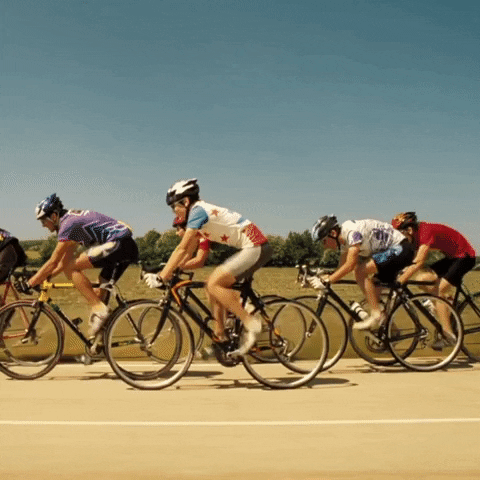Endurance Training: Why Do You Need It and How Much Is Healthy?
Our content strives to support, inform, and motivate you to meet your health goals. We want to be your trusted source of expert- and science-backed info dispensed in simple, actionable ways. Read our Editorial Guidelines.
If you want to run a 5k, participate in a triathlon, or spend hours chasing your children around the playground, then you need to incorporate endurance training into your workout routine.
Like balance, flexibility, and strength training, endurance should be part of any well-rounded training program. This type of training improves your, ahem, endurance.
When you incorporate more endurance training into your routine, it can improve your cardiovascular and muscular endurance — allowing you to enjoy your favorite physical activities for longer.
Here’s what this type of exercise entails, the benefits and risks, and the three types of endurance training to add to your routine.
What Is Endurance Training?

Endurance training is any training plan that increases the amount of time you can perform a physical activity. It mostly consists of aerobic exercise (or cardio, as the cool kids call it).
For a long time, there was a now-debunked idea in sports medicine that strength training was actually bad for an athlete’s endurance. The idea went something like this: More muscle mass increases an athlete’s overall body weight, which means their body has to do more work to move.
On the contrary, stronger muscles can increase your muscular endurance and make it easier for the body to perform different physical activities. That’s because your muscles won’t get tired as easily. Cardiovascular endurance, on the other hand, can help you increase your aerobic capacity.
At different stages in your training program, you’ll likely need different levels of cardio vs. strength training. For example, if you want tostart working out again after a long break, you may need to slowly improve both your strength and cardio with short sessions of high-intensity interval training. A good endurance training plan can help you with your cardiovascular endurance and muscular endurance.
But, imagine this scenario: You already have strong endurance in one aerobic activity (like cycling), and now you want to start doing a different type of activity (like running). If you’re in shape but this new activity seems difficult, you may need to spend a few weeks toning the muscles you need for your new activity.
Wherever your endurance levels are now, a personal trainer can help you find the best mix of strength training and cardio to meet your goals.
The Benefits and Risks of Endurance Training

The benefits of endurance training range from better health to better quality of life. But like any exercise regime, there are also risks, especially if you overtrain.
Benefits
Endurance training has health benefits for your cardiovascular system, respiratory system, and nervous system. And we’ve got a pile of scientific studies to back that up:
In a study on young adult women, participants who added more daily endurance exercise saw improvements in their cholesterol, glucose, and triglyceride levels.
Many studies also connect moderate levels of endurance training with improved cardiac output, a lower heart rate, and reduced blood pressure.A study in patients with chronic pulmonary obstructive disorder also found that endurance training allowed participants to perform simple physical activities more quickly and efficiently.
Another study linked endurance training with decreased inflammation and improved brain health.
Research also shows that both endurance and strength training can help with weight loss.
Along with its many health benefits, endurance training can simply improve your quality of life. It makes everyday activities — like running down stairs to move your laundry — feel easier. And improved endurance allows you to do the things you love — like dancing the night away — for longer.
Risks
Whenever you exercise, there’s a risk of overtraining, which increases your risk of injury.
Recent studies are also showing that, because of the continuous strain on their hearts, professional endurance athletes may actually have worse cardiovascular health with an increased risk of coronary artery disease, myocardial fibrosis, and arrhythmias.
To decrease the negative effects of overtraining, start slowly. Here are a few tips for doing that:
Add a few short workouts into your week, and then gradually increase the frequency and duration.
Always include a low-intensitywarm-up and cool-down.
If you start to feel the effects of overtraining, including chronic fatigue, decreased performance, poor sleep, loss of appetite, recurring illnesses, or heaviness in the muscles of your lower body, decrease your training volume by exercising fewer times per week or decreasing the length of your training sessions.
3 Types of Endurance Training to Add to Your Routine

It’s not just marathon runners and pro cyclists who use endurance training. Swimming, rowing, and cross-country skiing are all Olympic-level endurance sports, and many other competitive sports — like soccer, tennis, and basketball — also require a lot of endurance.
However, the types of endurance training have less to do with the sport in question and more to do with how endurance athletes prepare for them. So, jump into some gym clothes and get ready for your workout — these are the training processes that will improve your endurance.
1. High-Volume, Low-Intensity (HVLI) Training
In an HVLI training session, you’ll work out at a low-intensity for a longer period of time. When you’re doing low-intensity exercise, you move at a pace that you could maintain for an extended period of time — hours even. A hike is a form of low-intensity exercise.
But, while we all wish we could get out in nature all-day, everyday, most of us just don’t have this time available. So, aim for around one hour of HVLI training to start. If you have a free day on the weekend, consider throwing in a longer session. For your HVLI exercise, you might speed walk, swim slow laps, or cycle at a comfortable pace.
While HVLI training is effective, here’s a quick caveat: According to research, HVLI workouts will lead to slower improvements than the other two techniques. But, slow progress is still progress! If this technique works for you, embrace it.
2. Polarization Training
In polarized workouts, you’ll go back and forth between low-intensity and high-intensity activities — skipping moderate-intensity exercise altogether. (Moderate intensity is an effort you could sustain for around 30-60 minutes.)
You already know what low-intensity exercise involves. In high-intensity segments of your workout, you’ll push yourself to use an effort level you’d only be able to sustain for 15-30 minutes at a time.
For your polarized training, you may run or ride a bike at a low intensity three days a week and at a high intensity two days a week. (Though, each session should still include a low-intensitywarm-up and cool-down where you walk or pedal slowly.) In the same study we mention above, polarized training was the most effective technique with high-intensity interval training coming in just behind it.
3. High-intensity Interval Training (HIIT)
A HIIT workout alternates between very short periods of high-intensity exercise (30 seconds to one minute), followed by short periods of low-intensity recovery — in the same workout.
For example, in an HIIT workout, you might do 30 seconds of jump squats, then march in place for one minute, then do 30 seconds of mountain climbers, then roll your shoulders for one minute, and so on.
HIIT is almost as effective as polarization training, and it often doesn’t require any equipment. Since you fit all your low- and high-intensity intervals into one short workout instead of doing them as separate workouts, this training plan is easy for most people to fit into their weekly routine. Work smarter not harder! 💪
Create an Enduring Training Program

Endurance training is essential to your overall well-being and should be part of any balanced training program. This form of exercise can improve your heart health and your quality of life. More endurance means more energy to do the things you love. So, the next time you hit the dance floor or play a game of laser tag with your little ones, you'll be able to do it for longer.
There are three ways to approach endurance training — high-volume low-intensity workouts, polarization training, and high-intensity interval training — with polarization and HIIT being the most effective.
But, in order for endurance training to be effective to begin with, you need to stick to it! An online personal trainer can be the accountability partner you need, as well as someone who helps create a workout plan that works for you and shows you how to do it.
You can sign up for online training for as little as $3 per day. You’ll get regular check-ins from your trainer to help you stay on track. Your trainer will also create a personalized plan that will help you meet your endurance goals in a way that is healthy, sustainable, and effective.